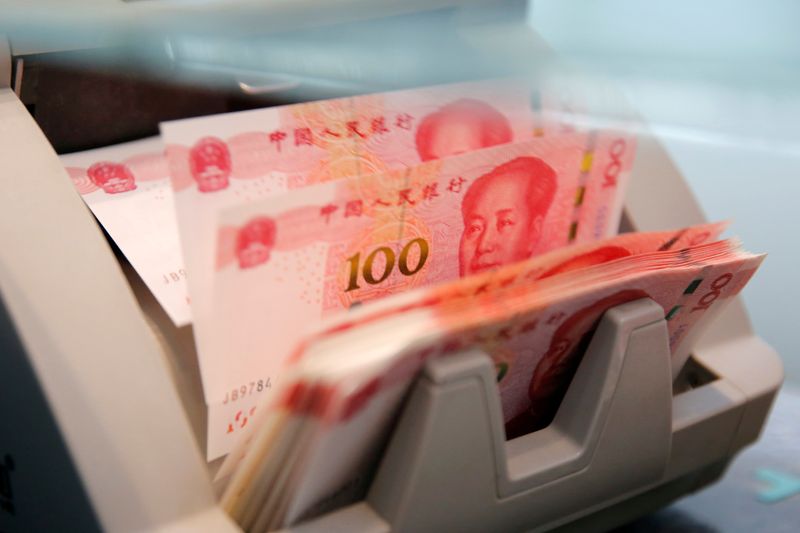BEIJING (Reuters) -New bank lending in China jumped far more than expected in May and broader credit growth also quickened, as policymakers try to pull the world's second-largest economy out of a sharp, COVID-induced slump.
Chinese banks extended 1.89 trillion yuan ($282.62 billion) in new yuan loans in May, nearly tripling April's tally and handily beating expectations, data released by the People's Bank of China on Friday.
Analysts polled by Reuters had predicted new yuan loans would surge to 1.3 trillion yuan in May from 645.4 billion yuan in April and against 1.5 trillion yuan a year earlier.
"Credit growth was stronger than expected last month and is likely to accelerate further following the clear signal in late May that policymakers want banks to step up lending," Capital Economics said in a note.
"More policy easing is likely. But private sector credit demand is likely to remain subdued while, on current budgetary plans, local government borrowing is about to slow. A dramatic increase in credit growth still seems unlikely."
New household loans, including mortgages, rose to 288.8 billion yuan in May, after contracting 217 billion yuan in April, while new corporate loans soared to 1.53 trillion yuan in May from 578.4 billion yuan in April.
However, 38% of the new monthly loans were in the form of short-term bill financing, which was down from 80% in April but still higher than 10% in the first quarter, suggesting real credit demand remains weak.
Chinese policymakers have recently stepped up support for the slowing economy as Shanghai and other cities ease tough COVID-19 lockdowns following a drop in new infections.
The cabinet announced a package of policy steps last month, including broader tax credit rebates and postponing social security payments and loan repayments to support businesses.
Local media also reported last month that financial authorities had told commercial banks to speed up lending.
In May, the central bank cut its benchmark reference rate for mortgages by an unexpectedly wide margin, its second reduction this year, in a bid to turn around the contracting housing market, a key economic growth driver.
But analysts say both banks and potential borrowers remain cautious in case there are further virus disruptions.
After discovering a handful of new cases, China's commercial hub of Shanghai will lock down millions of people for mass COVID-19 testing this weekend - just 10 days after lifting a gruelling two-month lockdown - unsettling residents and raising concerns about a fresh blow to businesses.
MORE POLICY EASING UNDERWAY
Premier Li Keqiang has vowed to achieve positive economic growth in the second quarter, although many private sector economists have pencilled in a contraction.
China will increase the credit quota for policy banks by 800 billion yuan ($120 billion) for them to support infrastructure construction, state television CCTV quoted a cabinet meeting as saying.
Broad M2 money supply grew 11.1% from a year earlier, central bank data showed, above estimates of 10.4% forecast in the Reuters poll. M2 grew 10.5% in April from a year ago.
Outstanding yuan loans grew 11.0% in May from a year earlier compared with 10.9% growth in April. Analysts had expected 10.7% growth.
Growth of outstanding total social financing (TSF), a broad measure of credit and liquidity in the economy, quickened to 10.5% in May from 10.2% in April.
Chinese provinces are racing to issue hundreds of billions of dollars worth of special bonds in June, frontloading investment to revive the slowing economy.
Analysts and policy insiders expect China to issue special treasury bonds later this year, to maintain a steady stream of funding.

TSF includes off-balance sheet forms of financing that exist outside the conventional bank lending system, such as initial public offerings, loans from trust companies and bond sales.
In May, TSF jumped to 2.79 trillion yuan from 910.2 billion yuan in April. Analysts polled by Reuters had expected May TSF of 2.02 trillion yuan.